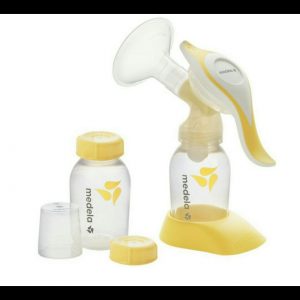Table of Contents
Introduction
Well, how long a breast pump lasts pretty much depends on how much you use it. Understand that purchasing a new breast pump is an essential and yet costly investment. If you intend on pumping consistently or semi-frequently, then a hospital – grade electric pump should be top of your consideration in addition to your motherhood arsenal.
Breast pumps, just like any other piece of equipment, will not last forever, even though you want them to! Thus, asking how long a breast pump will last and how long you will need to use it will help you decide which brand of breast pump to purchase.
How Long will a Breast Pump Last?
Most breast pumps have only one year warranty, according to Blisstree. However, it does not imply that they can’t last much longer than that. According to several moms, they claim that electric pumps can last anywhere from 8 months to 4 years, but it depends on two critical factors, use frequency, and maintenance.
And as such, getting a new pump is the best way to prolong the pump’s life. After any use, you’ll want to disinfect the parts and monitor the suction and sound of the engine. To clean the breast pump, Medela recommended taking each part after every use, cleaning it with warm water and use of liquid soap. It is also advised that the tubing and faceplate be washed once a month to avoid the development of bacteria or moulds.
Do Breast Pumps Have An Expiry Date?
No, breast pumps do not have expiry dates. If all the breast pump components are in good working condition, it’s possible to use the same breast pump for years to come. Moreover, if the breast pump should lose its suction, you can have the parts replaced. For this reason, breast pumps do not have an expiry date.
How Long Do Medela Breast Pumps Last?
A durable electric double pump can last through breastfeeding your second baby or even a few children. Nevertheless, like computers or other electronic devices, the electrical breast pump has a short lifespan. Medela guarantees its pump engines with a one year warranty.
Medela’s collection of breast pumps encompasses all the imaginable requirements of breast-feeding moms: first from start of breast-feeding with a premature born baby of the finest standard, a hospital – standard breast-pump Symphony (rentable), to the production of milk for an unusual night out with the elite-quality manual pump Synergy, to a unique breast-milk pumping with an elite status-use double-sided pump.
Most of those pumps include 2-Phase Expression engineering, which mimics normal sucking patterns for babies, allowing mothers to generate more breast milk in much less time.
What Is The Right Time To Pump?
You should start right away if you are planning to pump exclusively. This is because an early start is crucial for a healthy milk supply, so you should put your infant to the breast to begin pumping a few hours after your baby is born.
One reason you should do this because, at this stage, your body is ready to go and revved up. Your hormones have been grooming your breasts for milk since your early pregnancy. High levels of the hormone progesterone keep your lid on prolactin. However, when your baby is born, the amount of progesterone decreases, signaling your breasts to start milking.
Breast feeding your baby or the use of breast pump activates the areola nerves around your nipple, sending messages to the brain’s pituitary gland to release two hormones, prolactin and oxytocins. Prolactin allows gives some level of nutrients to the alveoli (these are known as sugars and protein) out of your bloodstream and converted to milk for the breast. Oxytocins allow the cells around the alveoli to contract and expel the milk from the milk ducts, allowing the milk to ‘let down’ or eject.
If you have a healthy baby and are breastfeeding comfortably, you should wait a few weeks before you begin pumping. It is recommended that you start two to three weeks before you get back to work – Moreover, you might want to get started sooner if you want your baby to learn taking a bottle.
How Long Should Your Pumping Last?
For moms who are exclusively pumping, it is recommended to pump at least every two to three hours for about 15 to 20 minutes to empty the breast. Each breastfeeding mother is distinct in nature as there could be more breast milk or even less milk and could have the breast drained much quicker or slower, hence, the timing is quite uncertain.
Therefore, we suggest that you watch and wait until the last few drops of breast milk have been expressed and then pump for about another two minutes to ensure that the breast is empty. Furthermore, moms who are just beginning to pump should do so early in the morning because you would typically produce the most milk between 2 and 5 a.m. We also urge moms to start pumping once a day as they continue to build up their milk supply.
Breast Pump Maintenance
A critical aspect of your breast pump’s lifespan is the sort of maintenance carried out on it. Washing certain parts correctly, ensuring that the battery is appropriately charged for rechargeable breast pumps, and other essential care tips will ensure that your breast pump performs as long as it needs to.
Secondly, note always to wash your hands before you touch your breast pump. Clean your hands before you pump. Rewash them before cleaning the pieces of the breast pump. This will help prevent bacteria from spreading to the areas of the breast pump.
Picking Additional Parts
It’s a smart move to pick up enough additional parts to give you a clean set for each pumping session. However, this is applicable if you find yourself having to pump more than once a day. If you make the mistake of using breast pump parts that are not sufficiently washed to pump again, then there is a chance that bacteria would get into your breast milk.
And this would be harmful to your child. Some breast pump makers typically produce additional components specifically for this purpose.
Conclusion
Most breast pumps will last for at least 12 months. Nevertheless, it is advisable to buy a breast pump that offers a warranty to prevent you from spending extra money on parts replacement. Finally, adopt the practice of cleaning and maintaining your breast pumps for long-lasting results.

